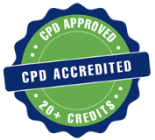
Chou Yi-Ching
Central Taiwan University of Science and Technology ,Taiwan
Abstract Title: Effectiveness of Applying Blended Flipped Nursing Education with Complex Scenarios
Biography:
Chou Yi-Ching holds a master’s degree from the Central Taiwan University of Science and Technology.She is currently serving as a Nursing Supervisor at the Hsinchu Branch of National Taiwan University Hospital.With 23 years of experience in nursing, she is presently working in the intensive care unit. Her clinical expertise includes critical care nursing, Infection Control Nursing, Operating Room Nursing, and administrative management.She has presented of research papers domestic conferences.
Research Interest:
The Holoeyes Azure, introduced by our hospital, is a concrete solution for advanced smart healthcare. It uniquely integrates 2D, 3D, VR, and MR comprehensive medical image storage and clinical applications globally, breaking through the storage-only function of traditional medical clouds. Currently, MR technology is widely applied in the medical field. Our hospital innovatively combines Teams and HoloLens 2 to assist medical staff in quickly and accurately grasping the location of lesions through MR image data and real-time analysis. Furthermore, through MR preoperative simulation teaching, it effectively reduces the burden on medical staff and continuously improves the quality of medical care. The introduction and application of Holoeyes Azure in our hospital mainly covers three areas: image storage, clinical applications, and education and teaching. Pioneering a paradigm shift in medical education, our institution implemented a blended learning flipped classroom strategy for our cardiovascular center and operating room personnel, leveraging the transformative capabilities of HoloLens 2 as a dynamic teaching aid. This innovative pedagogical model, enriched by a multi-sensory interactive approach, delivered crystal-clear, three-dimensional 3D color visualizations of vascular and cardiac anatomy, navigable through 360-degree rotation. This immersive experience significantly expedited the acquisition of critical anatomical knowledge among our medical staff. The efficacy of this approach was unequivocally demonstrated through pre- and post-training knowledge assessments, revealing substantial gains: aneurysm course scores surged from an average of 69 to 93, while aortic aneurysm course scores escalated from 77.3 to 97.3. Furthermore, the program garnered an exceptionally high average student satisfaction rate of 95%.
